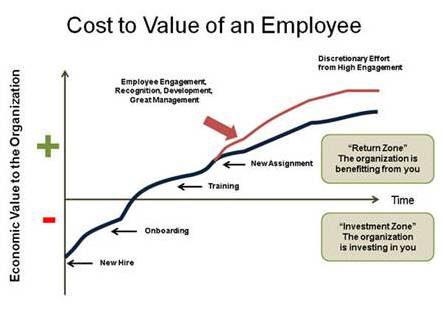Expert Tips For Efficient Employee Retention Strategy Attracting Talent and Retention-Growth Curves
Opinions expressed by Entrepreneur contributors are their own.
You're reading Entrepreneur India, an international franchise of Entrepreneur Media.

The importance of top-performer retention is a topic that consistently leads in HR and business surveys alike. Talent acquisition and retention is also the #1 source of competitive advantage in sustaining a firm's growth, with 97 per cent of top 1000 CEOs surveyed citing "access to, and retention of, key talent" as their top priority.
Talent retention is critically important for all organizations for two reasons:
Turnover is expensive:
Turnover costs mount steeply, arising from the direct replacement costs of talent acquisition, the opportunity costs of vacant positions and time to productivity, and—more broadly—lost business performance. The estimated financial impact of turnover range between 30 per cent to 250 per cent of annual salaries, according to a New York Times article in 2008. We have to remember that people are what we call an "appreciating asset." The longer we stay with an organization the more productive we get.
Top performers drive business performance:
According to a McKinsey study, in the opinion of senior managers, high performers consistently outperform average performers by a huge margin. According to the study, high performers in operations roles are able to increase productivity by 40 per cent, high performers in management roles increase profits by 49 per cent, and in sales positions, high performers are responsible for 67 per cent greater revenue.

Source: Economic Value of an Employee to the Organization over Time (C) Bersin by Deloitte
There is an increased need to retain top performers by focussing on performance management and career planning in a low-growth economy. Because low talent retention produces a substantial drag on corporate resources, management need to know which approaches work and what they should focus on to motivate their workforce.
Retain employees
For instance, a talent management strategy that allows employees to build a network, seek and find mentors, and help them grow and develop while feeling more connected and engaged is one means of retaining talent. There are many approaches that act as levers to increase retention, such compensation packages and rewards, benefits, telecommuting options, and work/life balance initiatives. Each may have a place in a company's portfolio of retention strategies.
Retaining top performers begins by hiring the right talent in the first place. Effective recruiting requires a streamlined process. Automated skills-based matching and automated workflows can enable recruiters and hiring managers to focus on evaluating a short list of quality candidates rather than being inundated with a huge pile of resumes to shortlist.
Building talent pools of suitable candidates proactively provides prospective quality hires, as well as lowering sourcing costs. Apart from knowledge, skills and ability, it is equally important to check candidates' attitude and cultural fit with the company such that can they relate to corporate goals.
The next step—onboarding—is the bridge from the promise of talent and output expected from a new employee to the attainment of actual productivity. Onboarding is the link from candidate to employee in the cycle of talent management; it is not merely a standalone activity.
Once a resource is fully onboarded, how do we get them to stick around? A common HR theory is that employees don't quit jobs or companies, they quit managers.
Once hired, the majority of the responsibility for talent retention shifts to the manager. It is the manager's role to direct, guide, and evaluate the employee.
To manage people well requires easy access to good information, facts, and data; it takes more than good people skills and intuition. Hence, line managers need visibility into corporate goals and their alignment with tasks and projects along with both past and expected employee performance in order to effectively manage in a dynamic business environment.
All members of the workforce need to work on the right goals. When talented employees understand how what they do will contribute to the success of the team, department, and organization, their interest, commitment, engagement level, and retention increases.
Next, comes the task of providing meaningful work that challenges and leads to growth opportunities. Day to day work must be challenging and add value to engage the minds and hearts of talent to produce results, deliver creativity, and nurture innovation.
Companies can often fill open positions through internal re-deployment, which can reduce costs and ramp-up time while increasing retention and employee satisfaction. One study determined that internal transfers and promotions average 38.8 per cent of all the full-time positions a company fills.
Receiving feedback and feeling valued as a contributor are critical for employee engagement and retention, throughout the multigenerational workforce. Research also indicates that employees—especially members of Generations X and Y—crave feedback and they want it often: weekly, monthly, and quarterly.
We find that feeling valued (61 per cent) figures higher than not getting paid enough (53 per cent) on the list of reasons for employee disloyalty on the pathway to leaving their job. Consider implementing some type of employee monitoring system (Within bounds, of course) – If a high performer suddenly drops in productivity or spends more time on Facebook than your work, they might be a flight risk.
From recruiting to performance, talent management applications can support specific retention strategies aimed at first identifying top candidates and then nurturing and valuing top performers during their employment tenure.
As the balance of power in the job market shifts from companies to professionals, employers should consider taking the needed steps to make both professional and personal lives of their employees a little bit easier and happier.
There is no one size fits all here – Your job is to understand your own company's retention drivers by role. The cost of implementing these strategies is a lot less than replacing one of your top performers.













